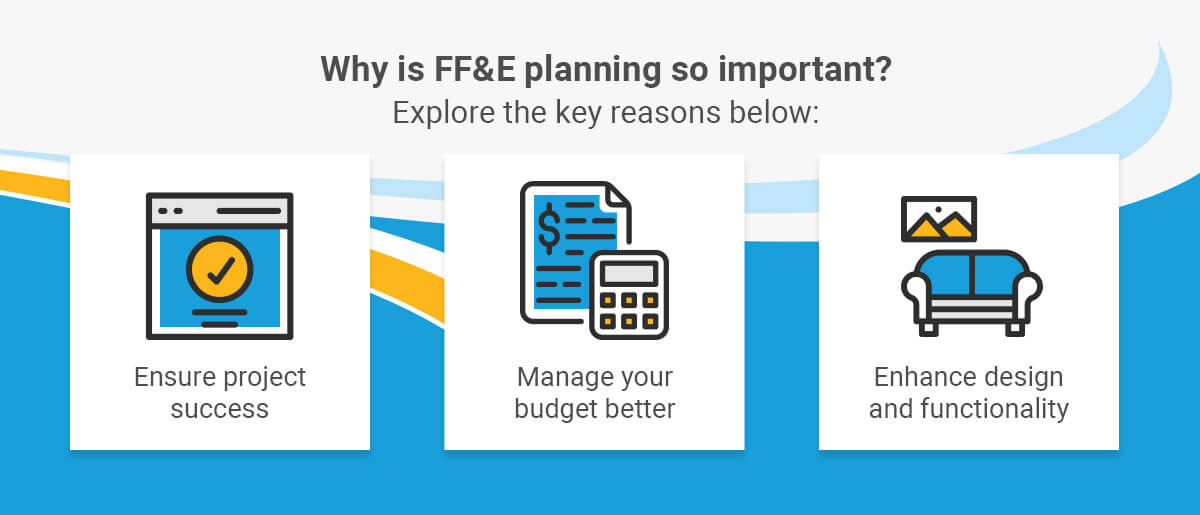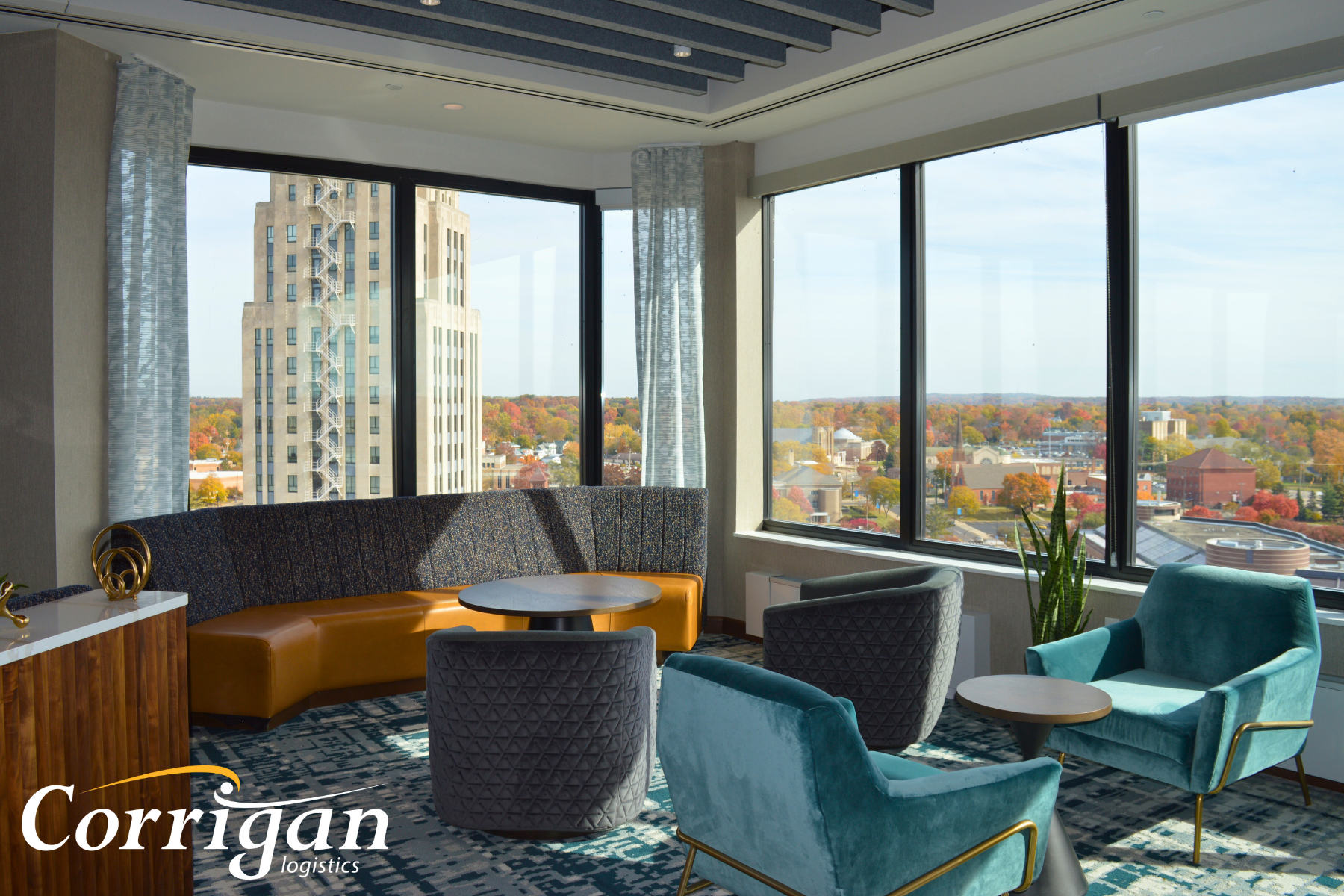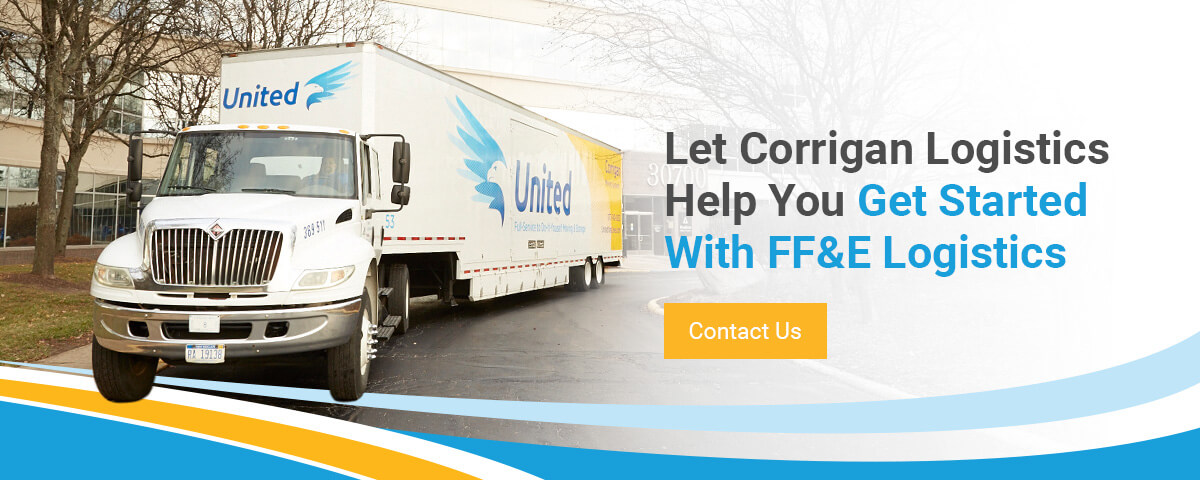Furniture, fixtures and equipment (FF&E) are crucial to a guests’ first impressions when they enter your space. Acquiring the right FF&E is essential. However, many owners and operators in the hospitality industry don’t have a full grasp of what these items should include and, most importantly, why they matter.
Understanding the unique conditions of your industry can help you make your FF&E logistics plan more efficient. Below, we explore everything you need to know about FF&E logistics and how to use it effectively to improve guest experiences and operational efficiency.
What Are FF&E Logistics?
FF&E logistics includes the transportatoin, warehousing, final mile delivery and installation of all common area and private space furniture, fixtures and equipment for the hospitality industry. This includes:
- Chairs
- Tables
- Lighting fixtures
- Kitchen equipment
- Work stations
- Guest room furniture
Even though these items may depreciate over time, they are essential to consider when you evaluate your company. Sometimes, people confuse FF&E with immovable business assets such as toilets, windows, office supplies, consumables, faucets and built-in furniture. These are not covered under FF&E.
The Role of Logistics and Transportation in FF&E
Efficient logistics involves detailed coordination of people, resources and facilities. In the hospitality industry, it encompasses the planning, implementation and control of the movement of furniture and equipment from suppliers to the hospitality business.
As you can imagine, transportation is an essential component of logistics. It supports the movement of FF&E goods via road, rail or sea, ensuring items arrive on time at their various destinations.
Logistics and transportation both are critical in FF&E. They assist with the following:
- Cost efficiency: Proper management can reduce costs associated with shipping, handling and storage of FF&E.
- Timely delivery: Proper planning can help ensure that FF&E is delivered on schedule, which is essential for project timelines.
- Quality assurance: When you’ve implemented proper handling and transportation methods, you can help minimize the risk of damage.
5 Key Steps in FF&E Planning
FF&E planning is the process of strategizing and organizing the procurement, transport, warehousing, delivery and installation of FF&E in the hospitality industry — it includes identifying needs, choosing the right vendors for your business and coordinating all logistics functions.

Why is FF&E planning so important? Explore the key reasons below:
- Ensure project success: With proper planning, you can avoid delays and ensure all items are available when needed.
- Manage your budget better: When you have a plan in place, it can give you a clear picture of expected expenses for improved budget allocation.
- Enhance design and functionality: With careful planning, you can ensure that the FF&E you selected aligns with the design vision of the space while meeting functional requirements.
These are just a few key benefits of FF&E planning. Below are the steps you can take to effectively implement FF&E planning for your hospitality business.
1. Inventory Assessment and Categorization
The first step involves evaluating your existing FF&E to determine what you can reuse, refurbish or replace. This is essential because an accurate inventory assessment can help you avoid purchasing items you don’t need.
To get started, you can create a simple spreadsheet and categorize these items based on their function and condition. You may also color-coordinate each category to make it easier to see everything at a glance.
2. Design and Specification Development
After creating your spreadsheet from the previous step, you can add detailed specifications for each FF&E item, including dimensions, colors, finishes and materials. All stakeholders need a clear understanding of the expectations, which reduces the likelihood of errors and miscommunication.
3. Vendor Coordination and Scheduling
At this point, selecting and communicating with vendors who supply the specific FF&E items you’re looking for is key. Coordination and scheduling also involves negotiating contracts, setting project timelines and getting on the same page regarding delivery schedules.
Vendor coordination and scheduling help to ensure that your items will be delivered on time and meet your specified quality standards.
4. Logistics and Delivery Planning
Step 4 involves planning the transportation of the FF&E, including selecting transportation modes and scheduling deliveries. A key component of this step is identifying potential challenges. For example, if it’s snowing, drivers may need to take precautionary measures to ensure their safety while on the road. Addressing these potential challenges beforehand can help your team overcome them.
5. Installation and Quality Control
The final step in FF&E planning includes overseeing the installation of your items and conducting quality checks — this is crucial to ensuring that everything meets the outlined requirements. The quality control component will help address any issues before the project is completed.
Common Challenges in FF&E Logistics Planning Explained
As a hospitality business owner or operator, the above guide to FF&E logistics is a great starting point. No matter how well-prepared you are, challenges are a normal part of the process. As long as you’re well-prepared to handle them, your business should still be able to thrive.
Balancing Timelines and Budgets
One of the biggest challenges to FF&E logistical planning is aligning timelines with budget constraints. For example, you might need to expedite shipping for certain items to meet an opening date. Expedition might mean additional costs to your budget. Striking a balance between the timelines and budgets to ensure that projects are completed efficiently without compromising quality is essential.
Managing Multiple Vendors and Stakeholders
Coordinating with various stakeholders and vendors can lead to misunderstandings or confusion, resulting in even more delays or errors. For example, you might have a situation where a vendor delivers furniture late while another requires that piece of furniture to complete their work. In this situation, effective communication will help ensure everyone stays on the same page and reduce the chances of further delays. Accommodating contingencies when creating your schedules and budgets can also be beneficial.
Logistical Issues
Logistics issues are likely to occur when any form of transportation is involved. These might include delays in shipping, damage to furniture during transit or even challenges with storage space. Having a clear contingency plan for such situations can help reduce the impact of some of these challenges.
Regulatory Compliance
Navigating local regulations and compliance requirements can also be very challenging, especially in cases when rules often change. However, following them to avoid fines, penalties or potential legal issues that can arise from noncompliance is essential.
Let Corrigan Logistics Help You Get Started With FF&E Logistics
If you’re ready to start this journey, knowing that you don’t have to do it alone is important. You can trust Corrigan Logistics to take care of every detail for you. Our hospitality installation and FF&E solutions offer the end-to-end services you need. We’ll coordinate every stage of your project so you can focus on creating the perfect experience for your guests.
Contact Corrigan Logistics today to get started on the right path to your FF&E logistics journey.




